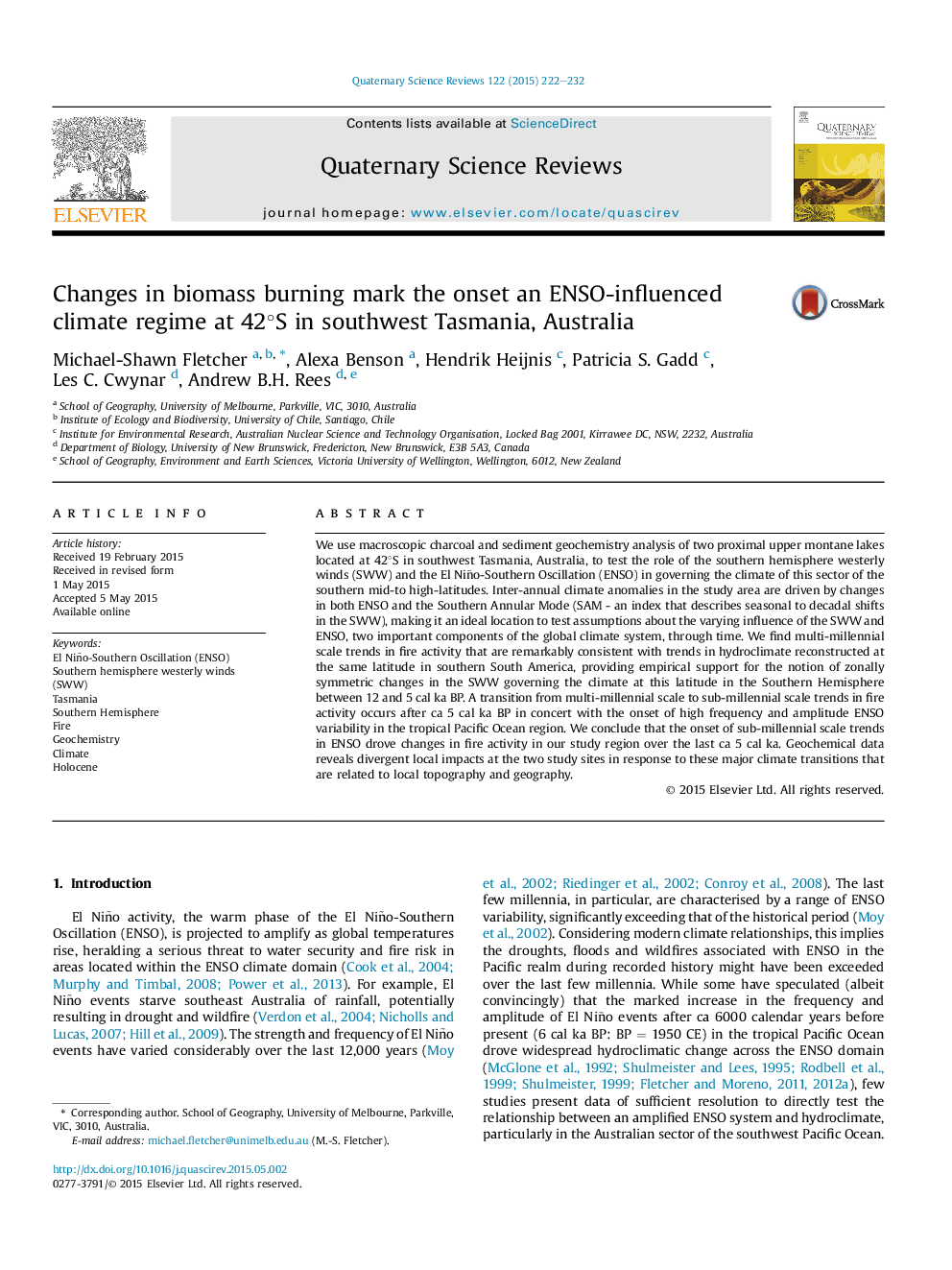| Article ID | Journal | Published Year | Pages | File Type |
|---|---|---|---|---|
| 6445869 | Quaternary Science Reviews | 2015 | 11 Pages |
Abstract
We use macroscopic charcoal and sediment geochemistry analysis of two proximal upper montane lakes located at 42°S in southwest Tasmania, Australia, to test the role of the southern hemisphere westerly winds (SWW) and the El Niño-Southern Oscillation (ENSO) in governing the climate of this sector of the southern mid-to high-latitudes. Inter-annual climate anomalies in the study area are driven by changes in both ENSO and the Southern Annular Mode (SAM - an index that describes seasonal to decadal shifts in the SWW), making it an ideal location to test assumptions about the varying influence of the SWW and ENSO, two important components of the global climate system, through time. We find multi-millennial scale trends in fire activity that are remarkably consistent with trends in hydroclimate reconstructed at the same latitude in southern South America, providing empirical support for the notion of zonally symmetric changes in the SWW governing the climate at this latitude in the Southern Hemisphere between 12 and 5 cal ka BP. A transition from multi-millennial scale to sub-millennial scale trends in fire activity occurs after ca 5 cal ka BP in concert with the onset of high frequency and amplitude ENSO variability in the tropical Pacific Ocean region. We conclude that the onset of sub-millennial scale trends in ENSO drove changes in fire activity in our study region over the last ca 5 cal ka. Geochemical data reveals divergent local impacts at the two study sites in response to these major climate transitions that are related to local topography and geography.
Keywords
Related Topics
Physical Sciences and Engineering
Earth and Planetary Sciences
Geology
Authors
Michael-Shawn Fletcher, Alexa Benson, Hendrik Heijnis, Patricia S. Gadd, Les C. Cwynar, Andrew B.H. Rees,
